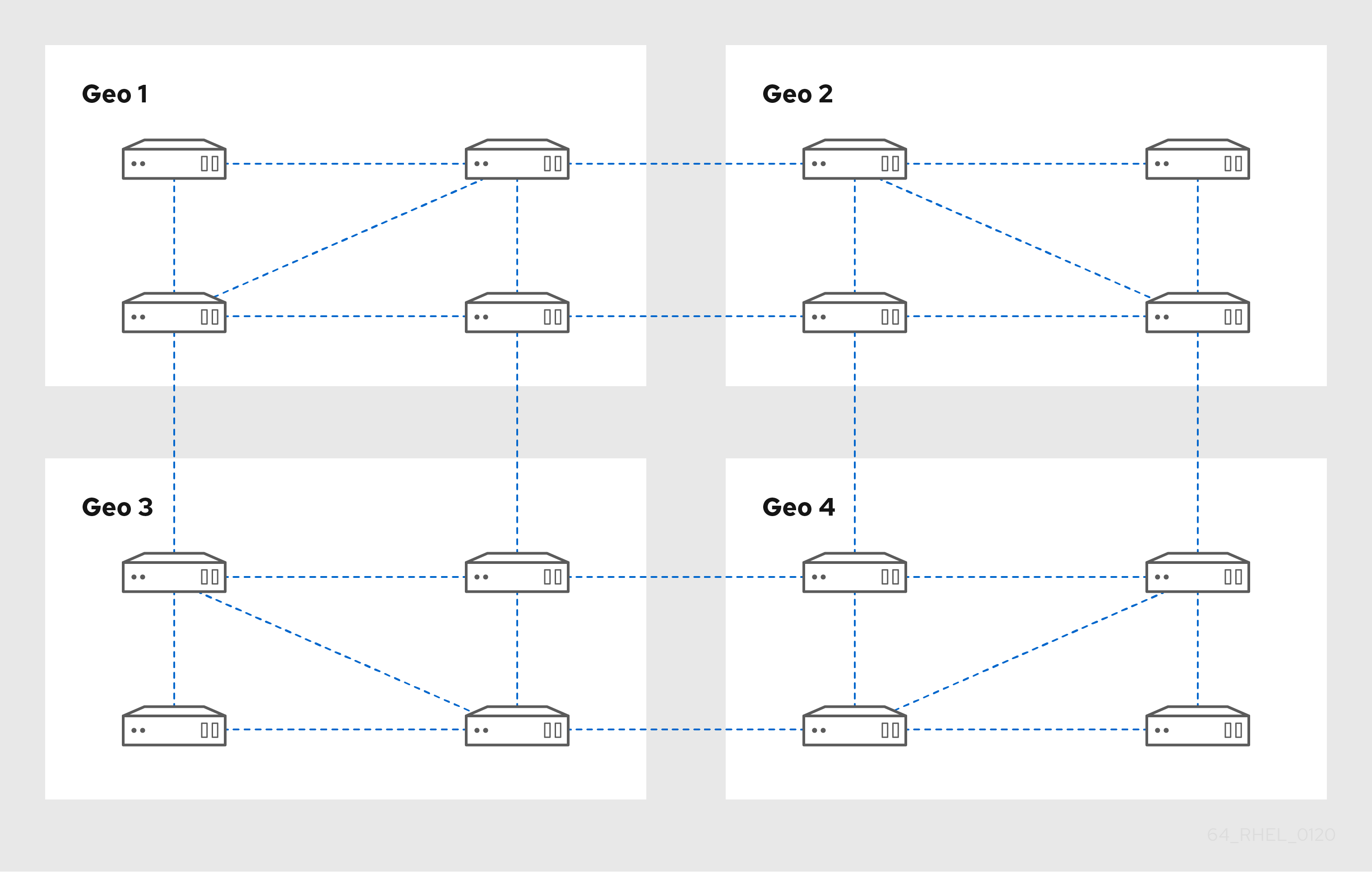Chapter 5. Optimizing the replica topology
A robust replica topology distributes workloads and reduces replication delays. Follow these guidelines to optimize the layout of your replica topology.
5.1. Guidelines for determining the appropriate number of IdM replicas in a topology
- Set up at least two replicas in each data center (not a hard requirement)
- A data center can be, for example, a main office or a geographical location.
- Set up a sufficient number of servers to serve your clients
- One Identity Management (IdM) server can provide services to 2000 - 3000 clients. This assumes the clients query the servers multiple times a day, but not, for example, every minute. If you expect more frequent queries, plan for more servers.
- Set up a sufficient number of Certificate Authority (CA) replicas
- Only replicas with the CA role installed can replicate certificate data. If you use the IdM CA, ensure your environment has at least two CA replicas with certificate replication agreements between them.
- Set up a maximum of 60 replicas in a single IdM domain
- Red Hat supports environments with up to 60 replicas.
5.2. Guidelines for connecting IdM replicas in a topology
- Connect each replica to at least two other replicas
- Configuring additional replication agreements ensures that information is replicated not just between the initial replica and the first server you installed, but between other replicas as well.
- Connect a replica to a maximum of four other replicas (not a hard requirement)
A large number of replication agreements per server does not add significant benefits. A receiving replica can only be updated by one other replica at a time and meanwhile, the other replication agreements are idle. More than four replication agreements per replica typically means a waste of resources.
NoteThis recommendation applies to both certificate replication and domain replication agreements.
There are two exceptions to the limit of four replication agreements per replica:
- You want failover paths if certain replicas are not online or responding.
- In larger deployments, you want additional direct links between specific nodes.
Configuring a high number of replication agreements can have a negative impact on overall performance: when multiple replication agreements in the topology are sending updates, certain replicas can experience a high contention on the changelog database file between incoming updates and the outgoing updates.
If you decide to use more replication agreements per replica, ensure that you do not experience replication issues and latency. However, note that large distances and high numbers of intermediate nodes can also cause latency problems.
- Connect the replicas in a data center with each other
- This ensures domain replication within the data center.
- Connect each data center to at least two other data centers
- This ensures domain replication between data centers.
- Connect data centers using at least a pair of replication agreements
- If data centers A and B have a replication agreement from A1 to B1, having a replication agreement from A2 to B2 ensures that if one of the servers is down, the replication can continue between the two data centers.
5.3. Replica topology examples
The figures below show examples of Identity Management (IdM) topologies based on the guidelines for creating a reliable topology.
Replica Topology Example 1 shows four data centers, each with four servers. The servers are connected with replication agreements.
Figure 5.1. Replica Topology Example 1

Replica Topology Example 2 shows three data centers, each with a different number of servers. The servers are connected with replication agreements.
Figure 5.2. Replica Topology Example 2

5.4. Uninstalling the IdM CA service from an IdM server
If you have more than four Identity Management (IdM) replicas with the CA Role in your topology and you run into performance problems due to redundant certificate replication, (RH) recommends that you remove redundant CA service instances from IdM replicas. To do this, you must first decommission the affected IdM replicas completely before re-installing IdM on them, this time without the CA service.
While you can add the CA role to an IdM replica, IdM does not provide a method to remove only the CA role from an IdM replica: the ipa-ca-install command does not have an --uninstall option.
Prerequisites
- You have the IdM CA service installed on more than four IdM servers in your topology.
Procedure
- Identify the redundant CA service and follow the procedure in Uninstalling an IdM server on the IdM replica that hosts this service.
- On the same host, follow the procedure in Installing an IdM server: With integrated DNS, without a CA.

